By Raeesah Hayatudin
As many of you will know, Sunway College has held Open Days on the 11th, 12th, 18th and 19th of March 2017 – we’ve all seen the huge, grand boards set up in the University providing visitors with information about the Open Days, about alumni of Sunway University, et cetera. On the 19th of March, Sunday, my friends and I volunteered in the Physics lab to help our lecturer out with presenting the Physics exhibits to visiting high school students and their families.
Now, I’m sure you’re wondering why in the world we would be so eager to get up early and go to college on a precious Sunday morning: well, perhaps it’s because we all have a soft spot for our Physics lecturer, but mostly we thought it would be a very interesting opportunity to handle and learn about complicated instruments which we may not get to see during the course of our A Level programme. We were especially amazed since, having just started our A Levels in January 2017, our time spent in high school was not so long ago, and back then, we’d only ever dreamed of experiments such as the ones we saw that day, or stared at pictures of them in textbooks in bewildered awe – “How on earth does it work?!” And it was a great experience! Not only did we get to fiddle with the Physics experiments all we wanted, but we managed to visit the Biology and Chemistry exhibits in the other labs as well.
Every science student should have the opportunity to get hands-on experience on cool science experiments like anyone with a child’s curiosity would, I say. It doesn’t have to be all memorization and relentless studying late into the nights.
Onto the exhibits! In the Physics lab, we had about eight exhibits set up, some experiments demonstrating several concepts or helping with calculations in Physics. Pictured below is an experiment involving the use of a diffraction grating, a laser and a gigantic protractor to help calculate the wavelength of light with the help of a particular formula.
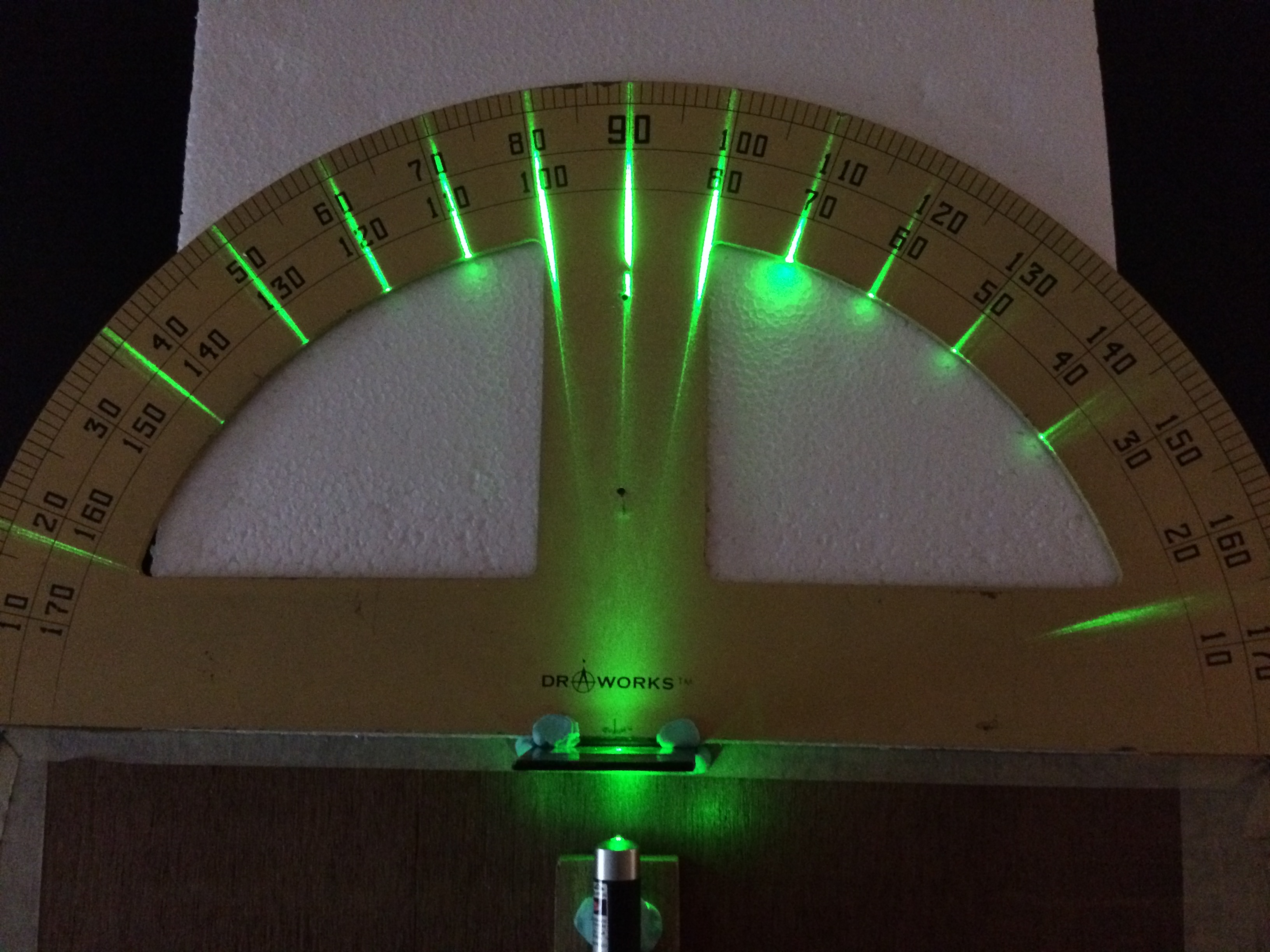
Below is an intriguing device called a Wimshurst machine, a device to generate static electricity (if you look closely at the image, you can see a spark – it’s essentially mini-lightning!) and can produce voltages up to around 300 kV.
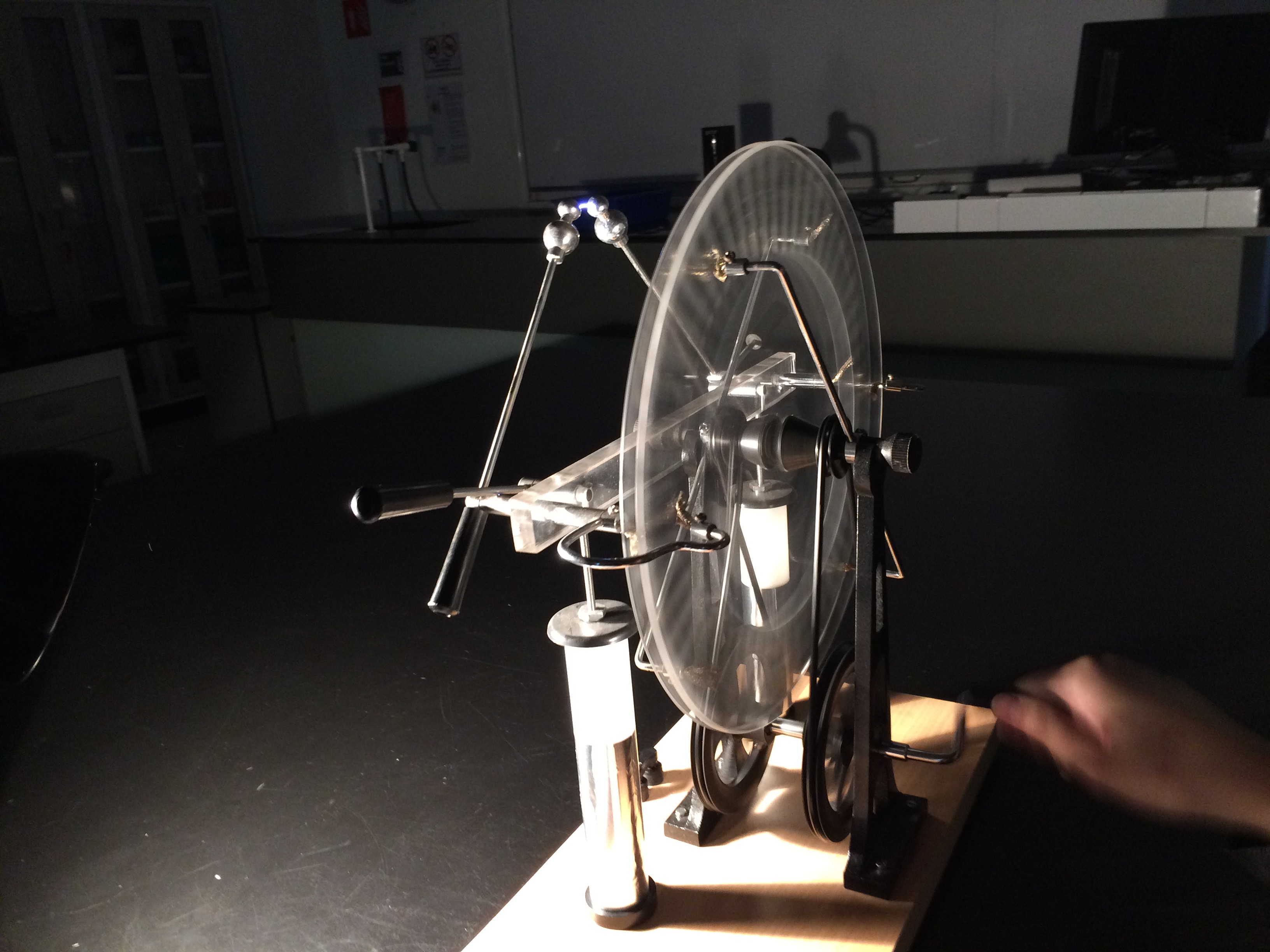
Below, a signal generator connected to an oscilloscope, serving several purposes including to allow us to learn how to calculate the frequency of a wave.
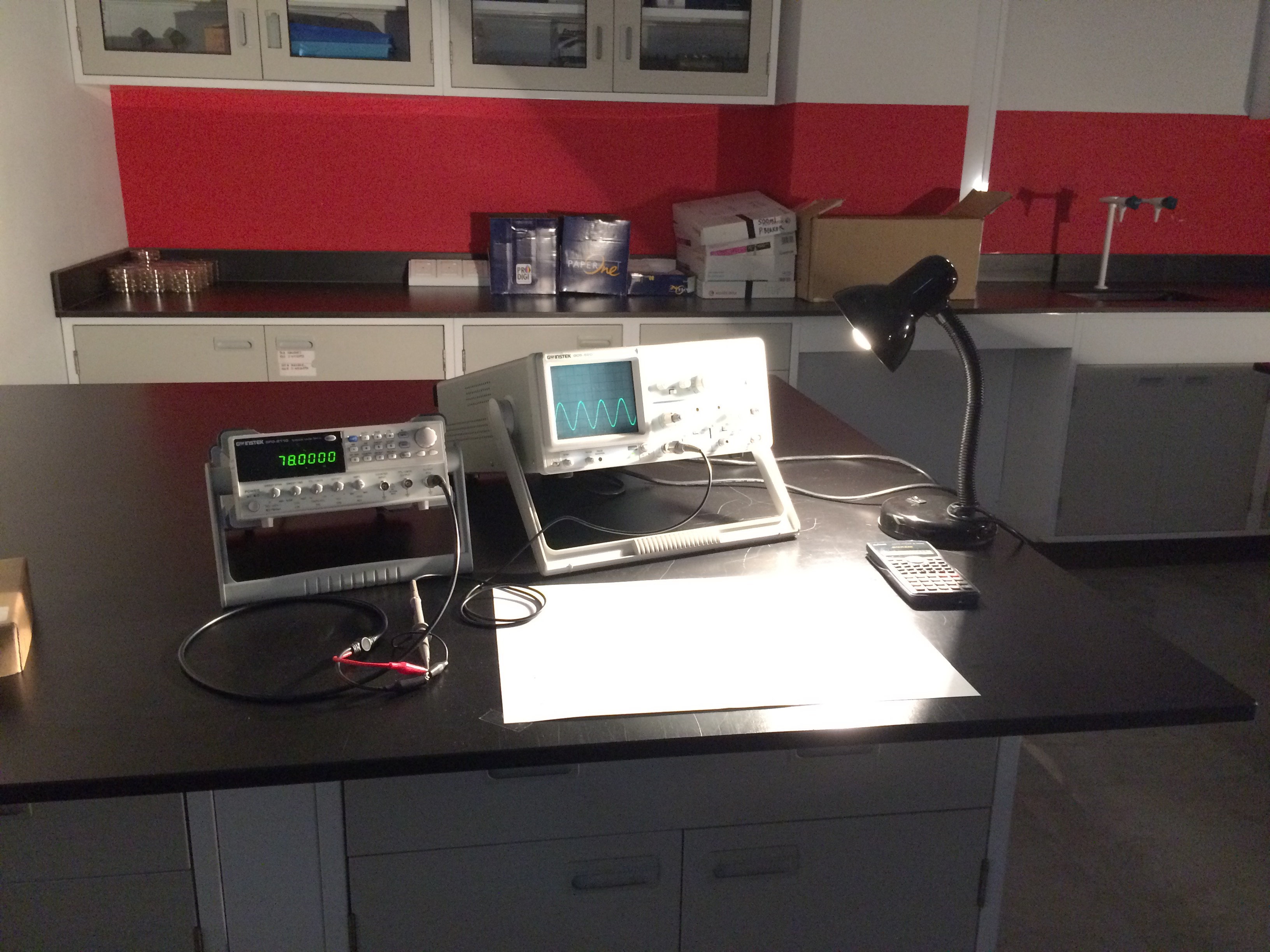
Below is a sneak peek into what we’ll learn in Quantum Physics: this is a spectrum tube for krypton gas, showing the colour that appears when the tube is connected to a power supply and krypton atoms become excited.

And down here, well… don’t tell Mr Kingsley we played around with his refraction glass blocks probably a bit too much than appropriate!
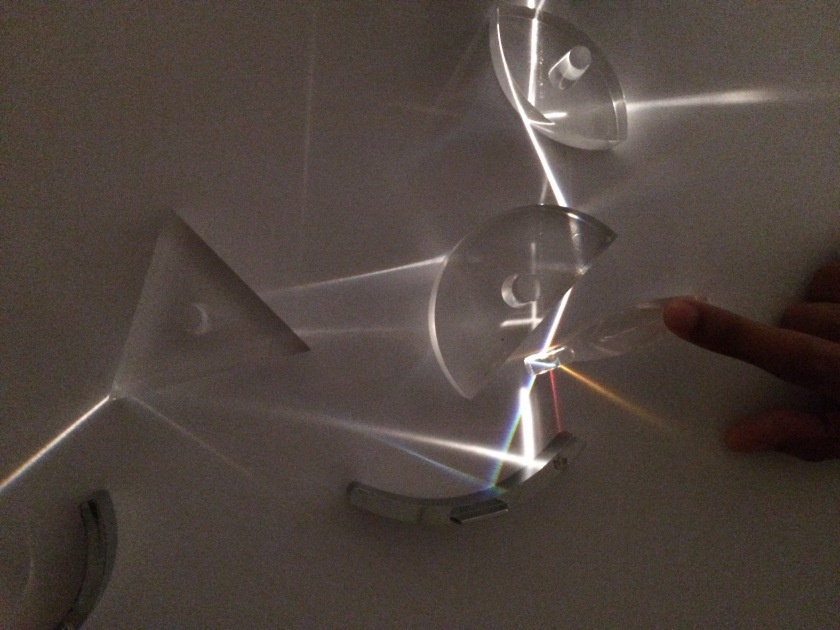
Moving on from the Physics lab, I have to admit that the animal exhibits in the Biology lab were my absolute favourite. I know the animal exhibits are held every Open Day, but somehow it never gets old, even after so many years.
Meet Mags, the adorable leopard gekho! He developed an endearing attachment to one of my friends – or rather, the sleeve of her sweatshirt. The underside of his jaw is unbelievably soft, and the rest of his skin feels, as one of my friends commented, “as if it’s been sprinkled with baby powder.” He’s very friendly and also curious! You can tell that each of the gekhos have their own distinct personalities, and the way they always seem to be smiling is really sweet.
(A fun fact for you: leopard gekhos store their nutrients in their tail and you can tell how healthy they are by the condition of their tail.)
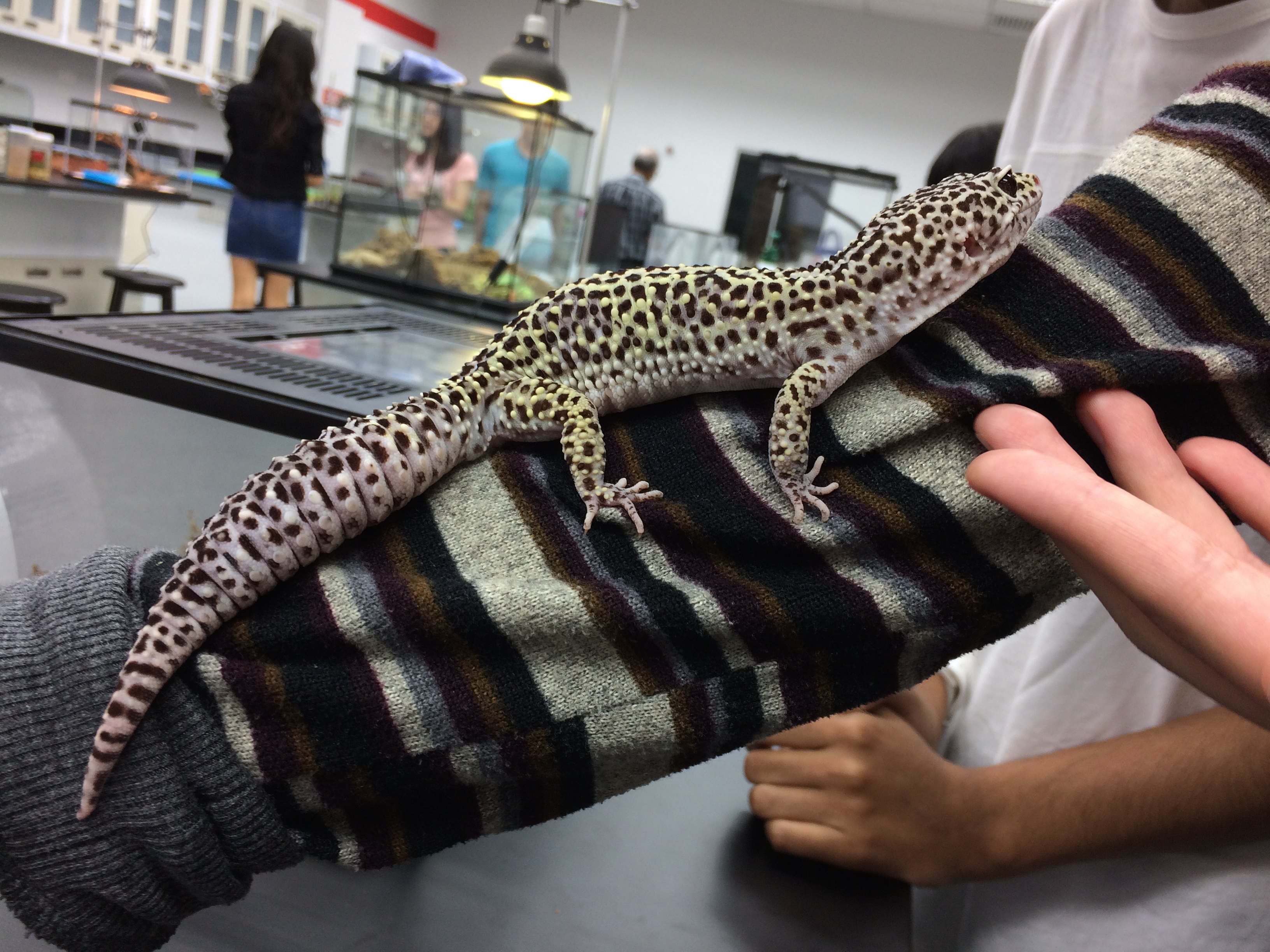
On the topic of telling stories of reptiles who become terribly attached to sweatshirts (perhaps for warmth?), this handsome little guy too was practically stuck to my friend’s arm for just about more than twenty minutes. Snakes are much softer and smoother to the touch than they look, and make for quiet and intelligent companions.
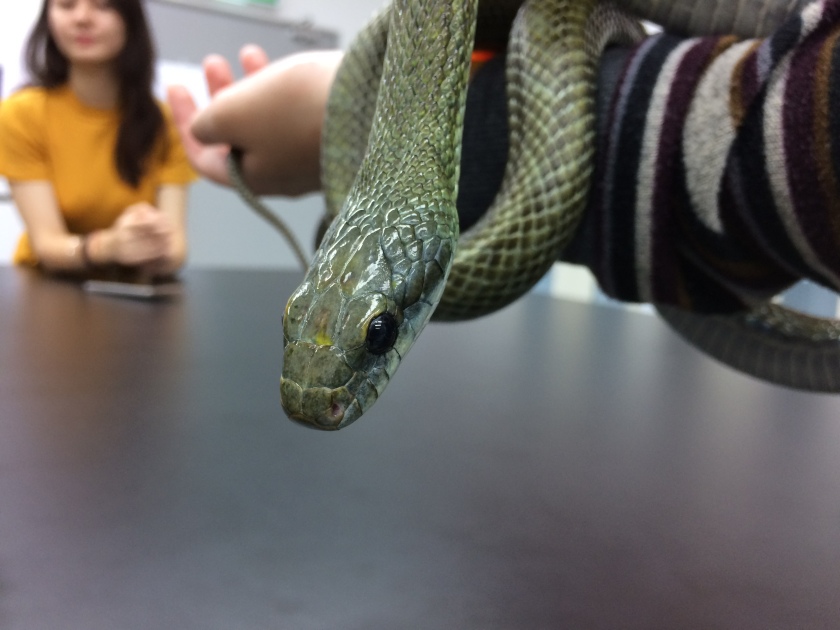
Here is Mags caught having a rather aggressive staring competition with Candycane, a corn snake.
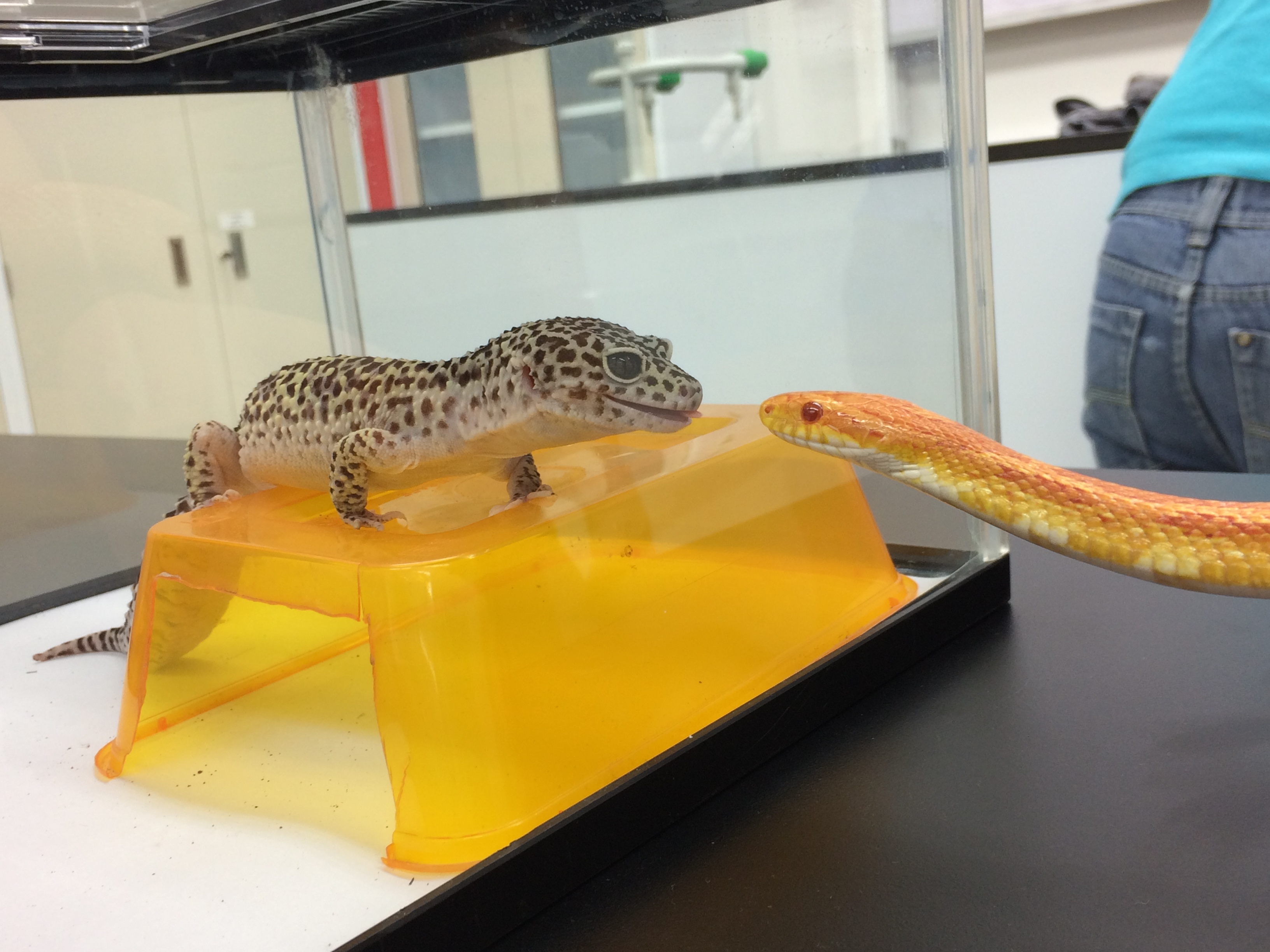
In the Chemistry lab, we met a few students from the MUFY programme who were so kind as to demonstrate several experiments for us.
This experiment below is part of the “Rainbow Connection” experiment, and composes of several steps which show several properties of pH indicators, and cause all the colours of the rainbow to appear and then disappear. This experiment helps show us a new way of thinking of how acids and bases react, since indicators themselves are weak acids or bases.
The colours produced in this experiment are very intense. Colours in the beakers, from right to left: red, orange, yellow, green, blue, indigo.
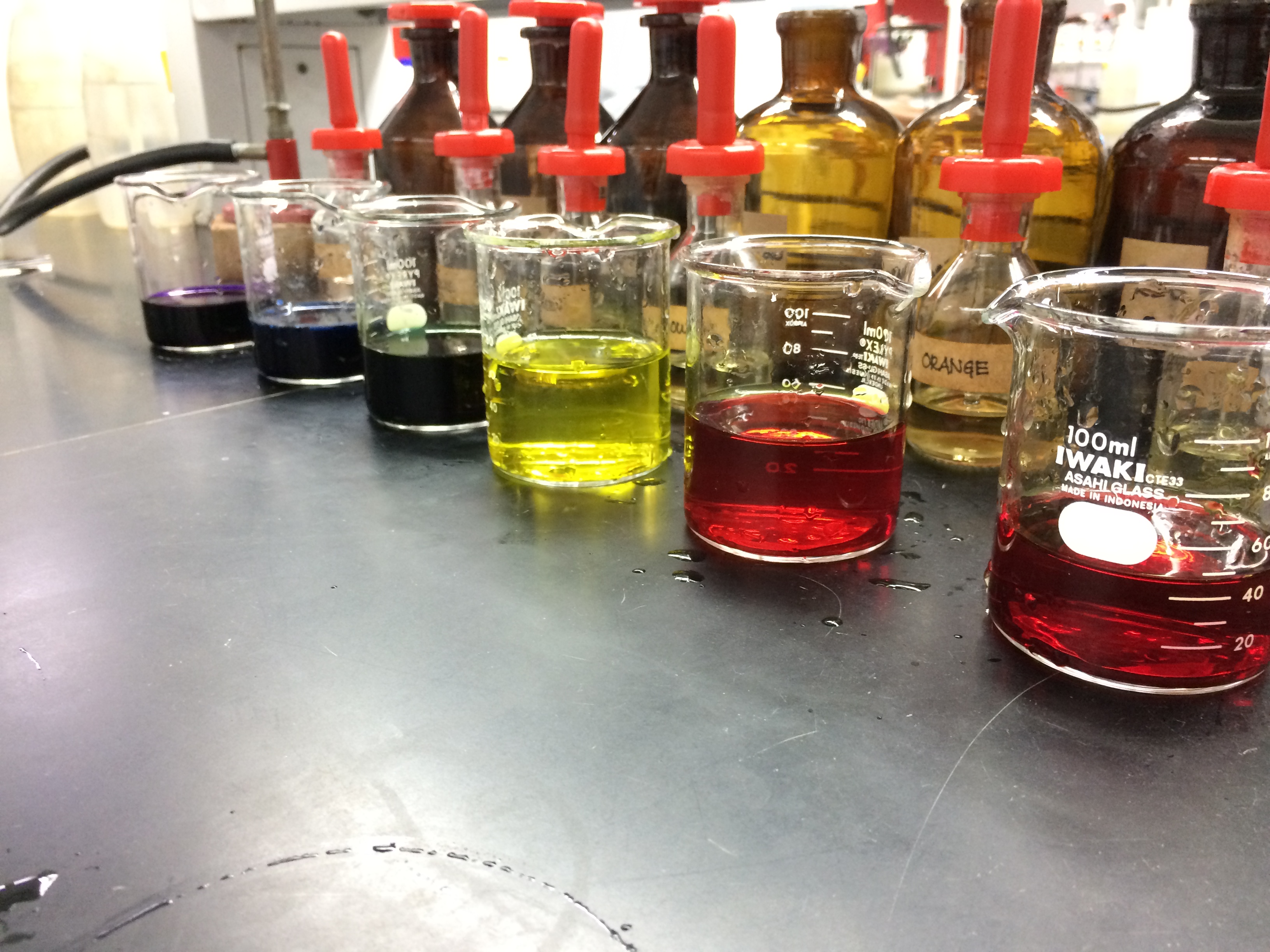
Here is the stunning reaction between potassium permanganate and glycerol, a flammable alcohol. A brilliant flame is produced a few seconds after glycerol is added to some solid potassium permanganate, and it then fades down after a while to a vibrant yellow-and-red flame before dying away completely.
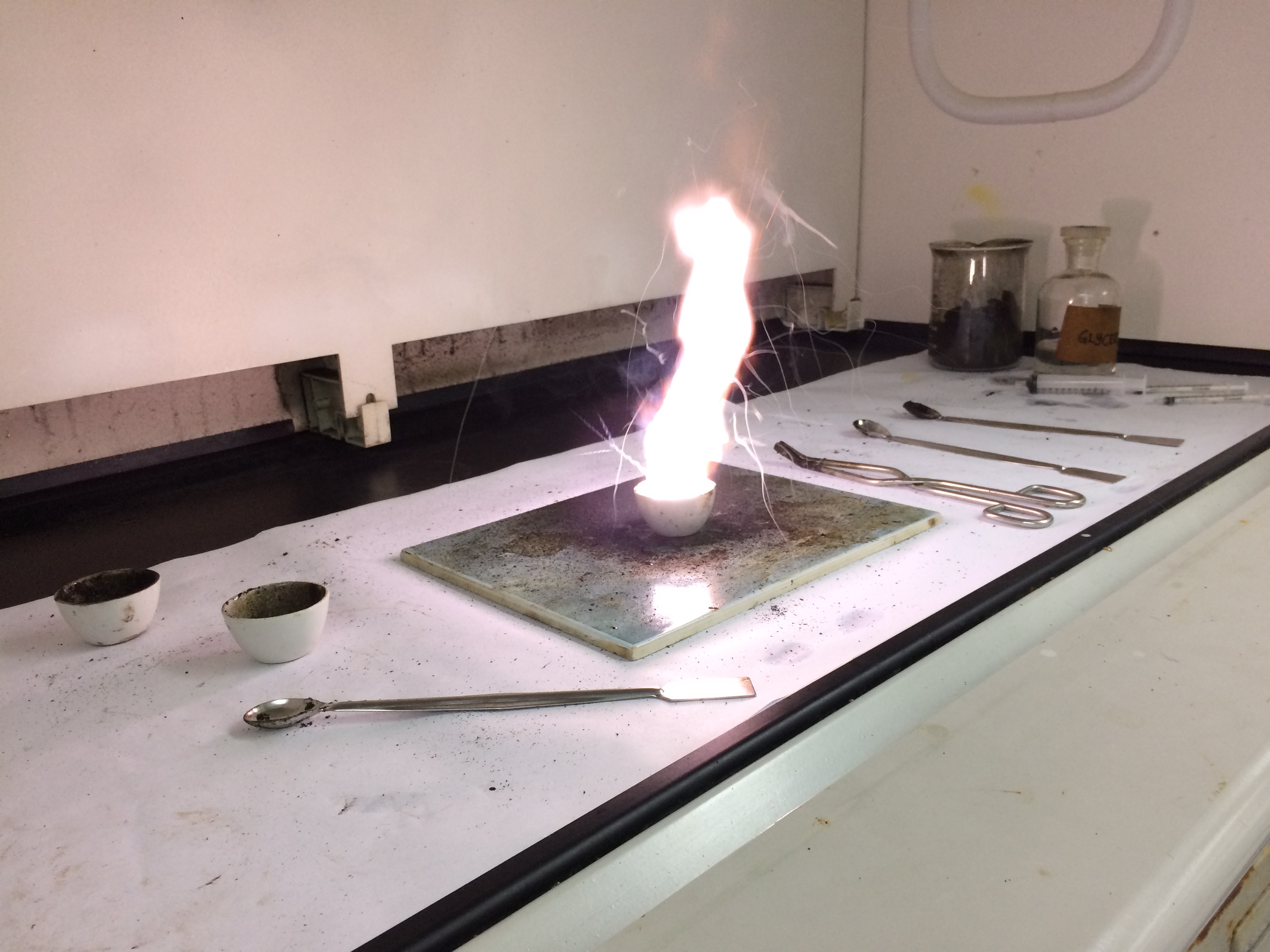
If you ever were considering helping out in the labs during the Open Days when you’re free, I hope this account was helpful to you; and if you do eventually volunteer, I hope you enjoy the short but beneficial experience as much as my friends and myself did!



